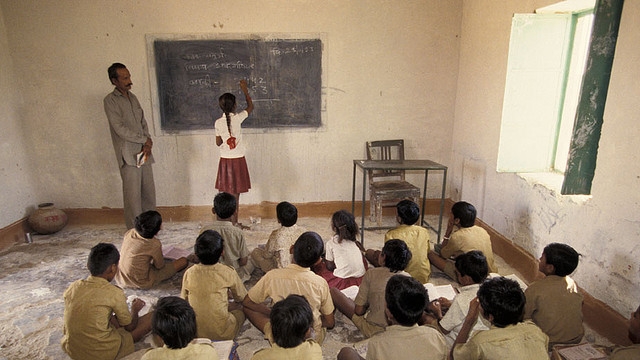Teacher quality has a large effect on student learning outcomes. But what’s the best way to motivate teachers and make sure they not only show up, but also teach in a way that taps into their potential? Answering this question is particularly pressing given the high enrollment rates across the developing world that have accompanied policies to boost education for all.
Research area: Education
Country: India
Evaluation Sample: 360 schools
Timeline: 2013 - 2017
Intervention: Incentives
Researchers: Sangeeta Goyal, World Bank; Andrew Fraker, IDinsight; Neil Buddy Shah, IDinsight; Ronald Abraham, IDinsight; Deeptha Umapathy, IDinsight; Sangeeta Dey, World Bank; Lant Pritchett, Harvard University
Context
In India, where there has been a large push to provide all kids with a basic education, the number of out-of-school children dropped to 8.1 million in 2009 from 25 million in 2003. Despite this, student achievement has fallen and the proportion of third graders who know how to do subtraction, for example, dropped to 28 percent from 45 percent between 2006 and 2011. One reason seems to be that so many more disadvantage children are enrolled, and many aren't prepared for school. At the same time, teaching quality is poor, with teachers themselves not doing well on math and language tests.
To strengthen learning, education groups are experimenting with ways to motivate teachers without using financial incentives. For example, teachers may qualify for certificates if their students do well, or they may be invited to monthly meetings with their peers to share experiences and foster a sense of community and responsibility. The evaluation will gauge the cost-effectiveness of these strategies and their impact on teacher and student performance in government and low-cost private schools.
